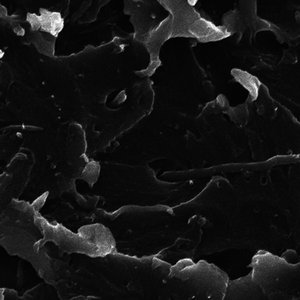Heat-Resistant, Recyclable Polymer Can Heal Itself
This article is more than 2 years old

Whether you know them by name or not, you and pretty much everyone else in modern society has benefited from, and even relied on, thermosets, which are heat-resistant polymers. They’re found in everything from superglue to smartphones to space shuttles, as the materials insulate electronics systems from heat and other pressures. Thermosets are so strong that, once they’re applied to something, they’re quite literally set in stone. This means that if there’s some kind of mistake, you have to start over. This also means that it’s virtually impossible to recycle materials coated in thermosets.
But IBM researchers may have solved that problem. In an article recently published in Science, they describe a new kind of thermoset that retains heat-resisting capabilities, but which will back to its original state if dipped in sulfuric acid. Thus, instead of tossing all those used thermosets, scientists could just use them again. IBM researcher Jeannette Garcia stumbled upon this find accidentally — while working on a different polymer, the solution in her flask hardened to the point that she had to break the flask in an attempt to get it out, and even then, the material itself was unbreakable.
That’s when Garcia enlisted the help of IBM’s supercomputers to figure out what made the solution react this way. Using computer models, as well as their knowledge in chemistry, Garcia and her team worked backward to try and find the catalyst for the reaction. Upon realizing she had created a thermoset, Garcia used the computers to see if the material was recyclable.
The difference between Garcia’s thermoset and previous attempts at making recyclable thermosets is that none of the strength is compromised — in tests, the new thermoset met or exceeded the materials currently used in the industry, and Garcia thinks it will be cheaper to produce as well. The only hitch is heat resistance — above 350 degrees Celsius, the material does start to break down. That might not seem like a problem, but computer chips in circuits can get as hot as 425 degrees Celsius. Thus, some kind of thermoset blend would have to be used.
The most incredible aspect of the thermoset, demonstrated in the video below, is the polymer’s ability to reassemble itself from chunks, which later become indiscernible. I knew we’d eventually figure out T-1000’s secret!












